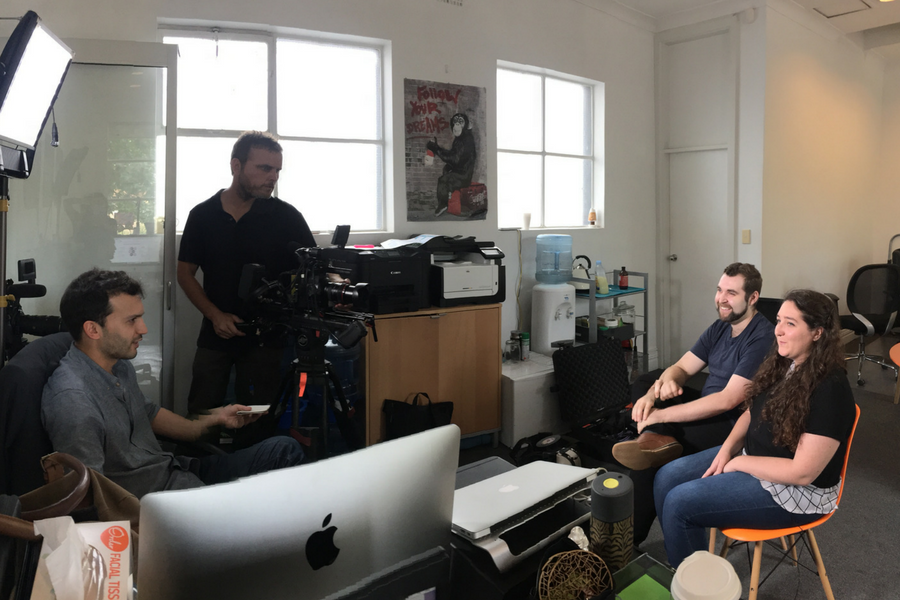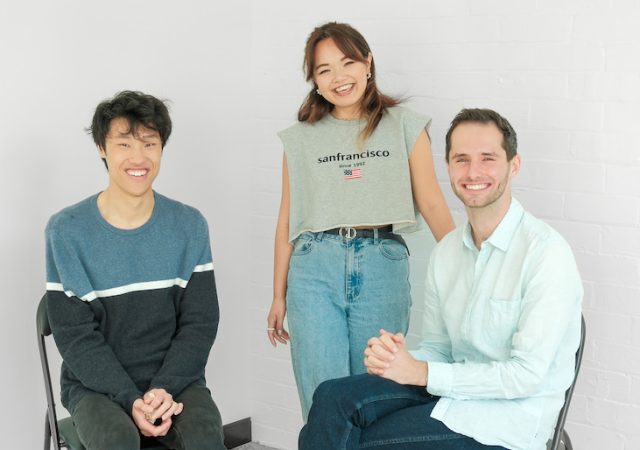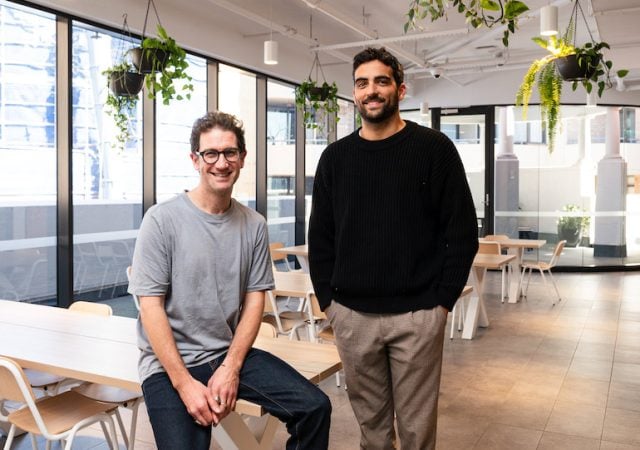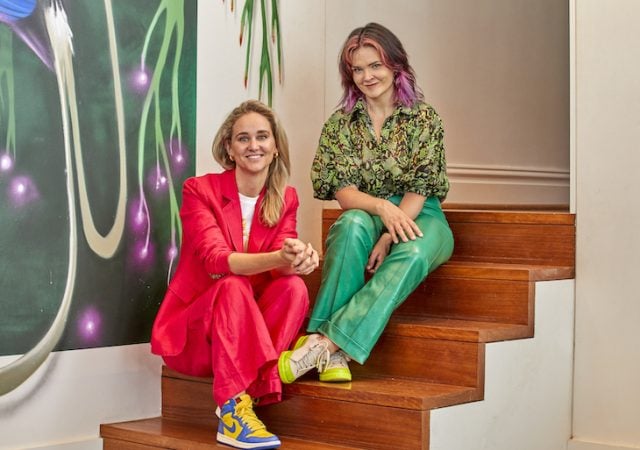Dear Readers,
With all our editors currently enjoying a well earned break until Monday read this knowing that my love for a random comma, writing sentences the length of paragraphs and my overall lack of grammatical finesse are why you should all adore Gina and James from our editorial team and thank the universe I only drive this thing a fortnight per year.
Look, I am the first to admit that if you actually count the last four days as the beginning of the business year than it has been a bit of a shit week. I can fully empathise with those startups and small business owners out there that have experienced what I am dubbing “the carry-over” from the holiday break where invoices are now well overdue but there seems to be a blanket absence across the board of accounts payable people in sight.
However common sense tells us that everything is business as usual from Monday. Everyone will be back and refreshed from the holidays and those outstanding accounts will be paid, those emails will be answered and eventually by Friday we will all be back at square one ready to kick on with 2017. Yes, I know that doesn’t solve this weeks issues right now – but at least there is a silver lining knowing that after the weekend things will return to normal.
That is of course unless you are a media platform, because according to posts like this from Pando.com that I read daily and other founders and investors of media startups in the United States we might as well all shut up shop right now and prepare ourselves for the grim reaper because there is literally no hope for anyone that is not a user funded publication to survive the 2017 Mediapocalypse that is to come.
I mean – damn! Way to motivate your fellow media tech founders. Like do these founders of successful media platforms in the States realise that hundreds around the world look up to them for inspiration? Don’t get me wrong I do appreciate the blunt honesty, I do but how about giving us some glimmer of light at the end of that shit filled tunnel?
Well for fellow Aussie founders that are in the content and media game let me try and provide us with some words of encouragement that at the very least provide us with the motivation to kick some arse on Monday morning – and perhaps even use this weekend to reshape some of our strategies for the coming year – because there are some changes that will affect our companies but the good news is we have at least three to six months to implement these strategies. That is one of the advantages of being behind the United States when it comes to the content creation industry we get given advanced notice of what trends will be coming our way.
For those of you asking – Are we really that behind given that we can access everything in real time on the internet? Yes, we are – case in point: Gimlet Media and its competitors had a very successful year in 2016. So successful it was dubbed the year of the podcast in the United States. In Australia however every thought leader in the marketing space has predicted that 2017 will be our year of the podcast because, delayed.
It is actually a real advantage for founders and content creators in Australia that we are a little behind, because it means we can prepare for what is to come.
So what is to come?
If we look at the trends and data coming out of the United States right now if your platform only uses advertising spaces to bring in the cash then you need to come up with some alternate sources of income. However don’t buy into the rhetoric that the users of your platform won’t engage with content that is powered by brands, we have a completely different corporate and political environment here in Australia than that of the United States. Some easy alternative revenue streams that are easy to implement include:
Branded Content Collaborations.
Users engage in content that interests them and in the last six months there has been a real shift in the mindset of both marketers and agencies where the publishers are being welcomed into the creative fold – because they realise that we are the ones that know our audiences best and therefore are the people best placed to decide what will or won’t fly on our platforms. There is a lot of money to be made via Brand X Media Platform collaborations – look at The Collective Hub, they kill it every single month. In fact right now I would say that Lisa Messenger is the person to look to if you need a bit of strategic inspiration on how to merge your platform with another brand. Whether its a Paypal, Lexus or Lulu Lemon the team at The Collective Hub always makes sure that the partnership ties back to the platforms brand and most importantly is of value to its readers.
In 2016 when you look at the best performing content on Startup Daily one of the standouts was our Women in Tech written series that was financed by our partners at MYOB.
What was it about the series that made it so successful? Simple to identify – this is content that we would have published on our platform anyway – there was no product push at all apart from a call to action at the end of each article to trial the brands Essentials Product. What was more powerful for the brand that no advertising spot or advertorial could ever achieve was that it made a strong statement that the brand is a huge supporter of women working in the tech space. Tracking the conversations on social media over the course of the campaign was evidence to me that if a brand aligns with a topic that they genuinely support and they collaborate with a media platform to produce content that first and foremost is for the users of that platform it will enjoy the knock-on effect of gaining further traction via social media.
Premium Content.
Let’s get the collective groan out of the way – yes we come from a spoilt world where all the content is free funded by brands. I am not suggesting to place some kind of paywall around that content at all. But I am sure that there are new additions to your platform that you are working on, brand new types of content – maybe video series or podcasts etc that have never normally been part of your usual daily offering. So why not monetise it? Statistically if you have a decent following – say between 5,000 and 10,000 users that return and engage in your content week in and week out then a certain percentage of that audience are likely to be super fans that will be more than happy to pay for premium content.
It is not a new concept that you are introducing here – in fact I think the porn industry began the practice years ago. But if you look around the web today there are numerous examples of where it works well.
Crikey operates at the end of the scale where basically the entire publication is funded by readers. It is also one of the few media platforms to implement a paywall strategy well before it became ‘a thing’ in Australia. However there is one Australian media platform that uses the premium content business model better than most, it is a super niche website that caters mainly to an audience of developers, up and coming coders and novice geeks like myself that like to learn those one off HTML tricks of the trade. The platform is Sitepoint, it has over 4 million users each month and provides most of its content for free – however to get that next level experience you need to become a premium member.
At the moment we don’t have a premium membership strategy across either of our platforms Startup Daily or Silicon Paddock. The content that we do provide right now will always be available and free – the startup sector in Australia is still in its infancy and other players in the startup media space have only just entered the ecosystem in the last twelve months, there hasn’t even been enough time for us all to compete against each other properly yet.
That does not mean that we won’t look at monetising some out of the box content strategies though. For founders of platforms that create content there is a platform called Patreon that can help us figure out what people will and won’t pay for and more importantly give us an indication of the perfect price point. For those not in the know (don’t worry I was late to this party too) Patreon is kind of like Kickstarter or Pozible for content creators. You figure out how much it is going to cost you to produce XYZ content per month and then people pledge a monthly fee to support that content – then you start earning that figure each month (give or take some drop offs etc) for producing that content. You can even embed everything onto your own platform – not to mention you expose your content to the Patreon audience as a bonus.
Then if you find that Premium Content is something your fans will support – you can spend the money building your own tech to accommodate it once its validated.
Cross Promotions … with the competition.
Given the fact that the primary demographic of Startup Daily readership is not from the coaching industry, I feel slightly safe saying that the way a lot of “coaches” life, wealth, fitness or otherwise promote themselves on their own platforms and social media makes me cringe so hard I look like a sultana. I can not deny however the powerful strategy many of them employ where they cross-pollinate and cross-promote the shit out of each other. A perfect example (and I wouldn’t call Emma and Carla Papas coaches, personally I see them as content creators) is the 3 Week Challenge by the Merry Maker Sisters – the cross promotion that the 16 health and wellness coaches that are part of the challenge receive is off the charts – it is an instant introduction to 15 other audiences of other players in a similar space.
Short term collaborations with similar media platforms to yourself has the power to take everyone to the next level.
What would an event look like that was a collaboration between a trio of publications look like in terms of ticket sales, audience reach and sponsorship potential – a lot better than just one single platform trying to do it all thats for sure.
I mentioned before a new group of players entered the startup ecosystem in the last 12 months, there is definitely potential to do something exciting that benefits us all collectively – the key is to put our audiences first – all the time. If content creators and founders use that as a starting point it prevents things becoming messy.
Yes, I too think that the advertising banner will begin to die in 2017 – however, and you can call me an eternal optimist – I think that 2017 is going to be the year that we see remarkable examples of content creation that prove in-depth journalism isn’t dead and that the only agenda that clever brands have in regards to supporting media platforms is making sure they find one that supports the ideas they do.
For now I am leaving my hangman’s noose in the cupboard. Let’s have a real crack at 2017.




















Trending
Daily startup news and insights, delivered to your inbox.